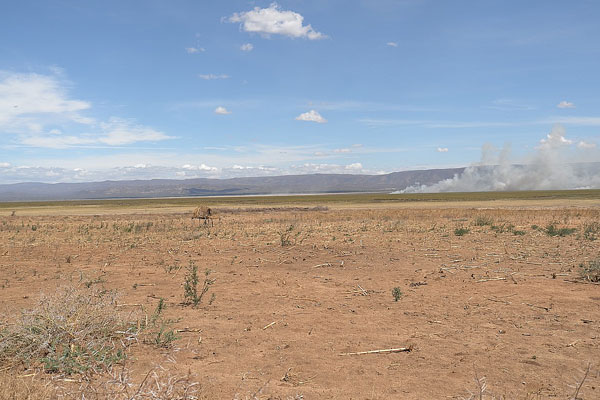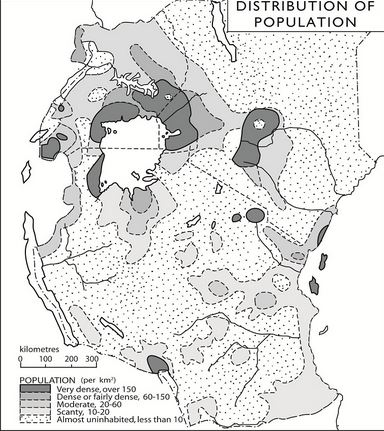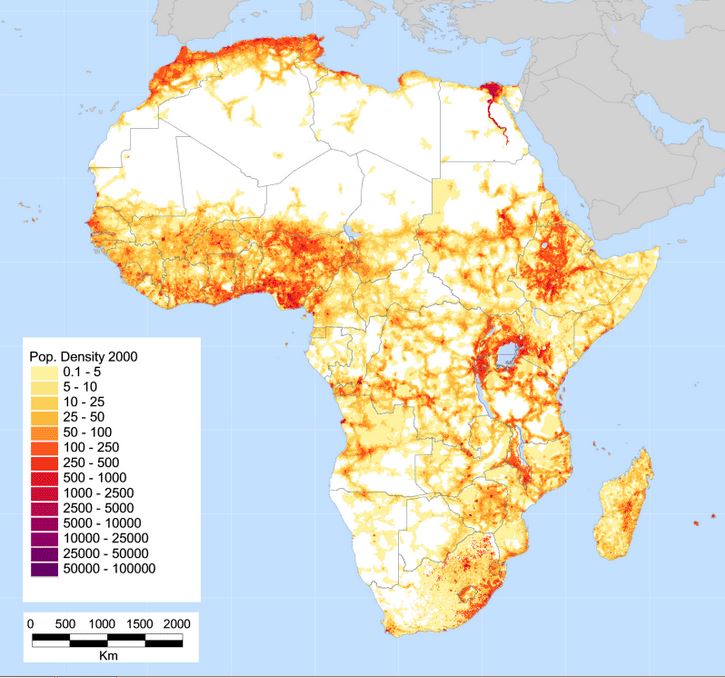Population distribution
Factors influencing population distribution
- Climate: Many people settle in areas that have enough rainfall for farming.
- Relief: People like to settle in areas where they can construct houses, railways and roads.

- Vegetation: Dense forests do not attract people because such forests have dangerous wild animals. Governments often protect forest reserves.

- Soils: Areas with rich and fertile soils, especially if they are found in high rainfall areas attract settlements.
- Pests and diseases: When pests are common in a place, they cause diseases which kill people and animals.
- Economic factors: These are factors like the presence of transport lines, administrative centres, a factory or a mining activity.
- Government Policy: The government can decide to move people away from one part of the country to another
- Urbanisation: People migrate from rural areas to look for jobs in towns.
- War: Movement of refugees into a country in large numbers can increase its population significantly
- Historical factors like colonisation: In some cases, the colonial government set up reserves where there was high population and set aside large areas of land for plantations where the population was low
- Slave trade: During slave trade many people were taken away from some countries and sold away as slaves. This left some areas with low population.
- Social factors: People like to settle where they can reach social facilities like schools, hospitals, shops and markets.
Reminder - Push and Pull Factors

Push factors are things that force people to move away from a place.
Pull factors are those that attract people to migrate.
Population distribution of Eastern Africa.

Population distribution of Africa




